And the award goes to…
By Lauren Jonas, NSTA Assistant Executive Director
Posted on 2011-03-10
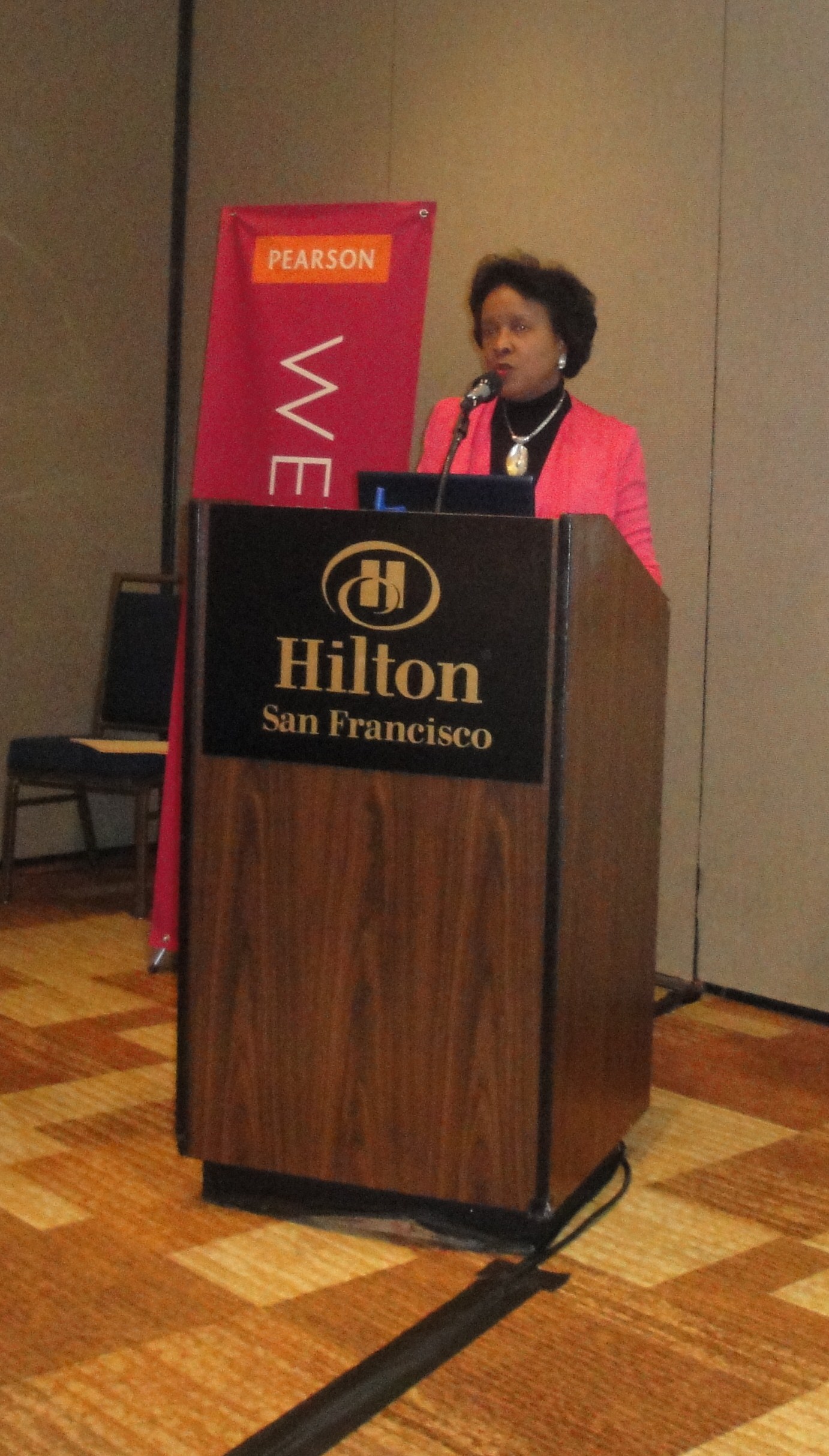 I just had the honor of being a guest at the NSELA breakfast—a star-studded event if I ever saw one in the science education community! At the breakfast, Jason Painter of North Carolina was named this year’s recipient of the Outstanding Leadership in Science Education Award, given by Pearson Publishing Company and the National Science Education Leadership Association. Painter was unable to attend, but was recognized by Dr. Thomasena Woods of NASA’s Langley Research Center. As I was peeking at the program, I noticed that Dr. Woods herself was the winner of an NSTA award. What a testimonial to the importance of collaboration among our members. Congratulations to both Jason and Thomasena!
I just had the honor of being a guest at the NSELA breakfast—a star-studded event if I ever saw one in the science education community! At the breakfast, Jason Painter of North Carolina was named this year’s recipient of the Outstanding Leadership in Science Education Award, given by Pearson Publishing Company and the National Science Education Leadership Association. Painter was unable to attend, but was recognized by Dr. Thomasena Woods of NASA’s Langley Research Center. As I was peeking at the program, I noticed that Dr. Woods herself was the winner of an NSTA award. What a testimonial to the importance of collaboration among our members. Congratulations to both Jason and Thomasena!
 I just had the honor of being a guest at the NSELA breakfast—a star-studded event if I ever saw one in the science education community!
I just had the honor of being a guest at the NSELA breakfast—a star-studded event if I ever saw one in the science education community!
At the conference
By Mary Bigelow
Posted on 2011-03-09
 I’m finding it hard to believe that it was 25 years ago that I attended my first NSTA conference—here in San Francisco. I remember going home with lots of new ideas to improve my teaching, a ton of materials (no charge for checked bags then), and many new friends.
I’m finding it hard to believe that it was 25 years ago that I attended my first NSTA conference—here in San Francisco. I remember going home with lots of new ideas to improve my teaching, a ton of materials (no charge for checked bags then), and many new friends.
Fast forward to today where a lot has changed, in terms of technology, research on learning, NCLB, and financial situations. One thing that hasn’t changed though is the dedication of teachers. I stopped by the Moscone Center on Wednesday evening before the conference, and it was packed with teachers registering for the conference, browsing the program for tomorrow’s agenda, and talking with colleagues about which sessions to attend (which run from 8 am to 6 pm). The line at the bookstore was long, and I’ll bet a lot of the books being purchased will be shared with fellow teachers next week.
I suspect that many of the teachers here have paid all or part of their expenses and used personal days to attend. They had to prepare lessons for their substitutes, and they’ll be checking in via text, Skype, or email. I’m very proud to be part of such a dedicated group of professionals. Now more than ever, we need to support each other and learn from each other. Our students are depending on us.
 I’m finding it hard to believe that it was 25 years ago that I attended my first NSTA conference—here in San Francisco. I remember going home with lots of new ideas to improve my teaching, a ton of materials (no charge for checked bags then), and many new friends.
I’m finding it hard to believe that it was 25 years ago that I attended my first NSTA conference—here in San Francisco. I remember going home with lots of new ideas to improve my teaching, a ton of materials (no charge for checked bags then), and many new friends.
Should science be taught in a Spanish immersion class?
By Lauren Jonas, NSTA Assistant Executive Director
Posted on 2011-03-09
You never know who you might meet in the airport. Another NSTA staffer and I were waiting for our flight at Dulles and discussing our plans to put our soon-to-be kindergartners in a Spanish immersion program. A woman in a nearby seat piped up that she’d had 4 children go through such a program, and we were immediately at attention! For our few remaining minutes before lift-off, we peppered the veteran mom with questions, and most of the information was gratifying. But then she explained one of the parts that had been a challenge, and that was about science. “For instance,” she said, “my daughter could name every part of the cricket in Spanish, but when she took state testing, she couldn’t name them in English.” She lauded the program anyway—the mind-expanding opportunities far outweighed the challenges. But I began to worry. But the worry soon evaporated as I remembered that I was heading to a place full of bright, inspiring people who would have answers for me. Thank you, Science Teachers! As an NSTA staffer, today I found yet another reason to remember that I am working with a great bunch of people.
You never know who you might meet in the airport. Another NSTA staffer and I were waiting for our flight at Dulles and discussing our plans to put our soon-to-be kindergartners in a Spanish immersion program. A woman in a nearby seat piped up that she’d had 4 children go through such a program, and we were immediately at attention! For our few remaining minutes before lift-off, we peppered the veteran mom with questions, and most of the information was gratifying. But then she explained one of the parts that had been a challenge, and that was about science.
Child-initiated inquiry
By Peggy Ashbrook
Posted on 2011-03-09
 Here’s a question for you, to help me understand the way science activities and science inquiry are developed in early childhood classrooms. It relates to the topic of the March 2011 issue of Science and Children, “Shifting from “Cookbook Labs” to Full Inquiry.”
Here’s a question for you, to help me understand the way science activities and science inquiry are developed in early childhood classrooms. It relates to the topic of the March 2011 issue of Science and Children, “Shifting from “Cookbook Labs” to Full Inquiry.”
What questions do your preK-grade 2 students ask, investigate, document, and present their findings, all on their own? Any?
In the classes I work with, I see a lot of questioning, action to find out what happens, and presentation (showing or telling classmates and teachers) but not much documentation. My students rarely document their findings without my encouragement or request but they often raise questions, by their actions or they voice questions.
Here’s my preliminary list of the investigations my students undertake:
- Which food tastes better?
- Does liquid soap come out of the pump when I push down?
- Will it make a loud sound again when I dump out this basket of small objects?
- Will I get the object if I grab it from another student?
- Where was the snail yesterday (I didn’t see it in the tank)?
- What happens when I touch the magnets together?
- If I throw the scarf with more force will it go higher into the air?
- What plants do the green caterpillars live on?
- Will the sand hold a hole shape as I dig?
- Why is the tunnel warm in the sunshine and cool in the shade?
- How does my voice sound when I talk and then shout into a big cardboard tube?
And some additional questions from preschool teacher Marie Faust Evitt who has many photos of the activities online:
In the sand box:
- What happens if I put sand in a gutter as water from a hose runs down? Can I block the water?
- What happens if I dig a big hole where water is pouring into the sand?
- How can I make a lake the fastest way—letting water run down the gutter into the sandbox or filling a sand pail with water from a sink and dumping it in?
Block area:
- How tall can I make my block tower before it falls over?
- Which cars go fastest down ramps?
- How can I make cars go faster down ramps?
- How tall can I make a building out of magna tiles?
Painting/color mixing:
- What happens if I mix these colors?
- What happens if I mix all the colors?
- What happens if I pile oodles of paint on the paper?
- What happens if I squeeze the glue container as hard as I can?
Marie says, “This is just a start. Actually when I think about it, they are posing and exploring jillions of questions… but as you say, they don’t document. They are busy doing.”
We can make a request for documenting their work and findings at times when it will extend rather than end their work. Children will refer back to this drawing/writing/photograph later in further discussion about the activity. This happened in my classroom with a drawing of how much rain was in a playground rain gauge —a drawing made in October. Now at the end of our winter I am reintroducing the gauge (it was inside for winter) with a container for “making rain” and a tub to hold it all. The children poured water through container with holes in the bottom to make “rain”. The rain fell into the rain gauge and into the plastic tubs (and a little spilled). I asked the children, “How can we measure how tall the water column is, and how can we tell other people about it?”
Children pointed to the numbers (inches of rain) marked on the column, recognizing them as measurement. They also selected the previously introduced unit cubes, “measuring hands” (hands cut from paper and taped into a length) and links of chain as a way of seeing how tall the water column was.
Others compared it to another object such as a pencil, string of beads, or the edge of a mirror. Then one child pointed to the drawing of the rain gauge hung on the wall last fall. This inspired other children to make drawings to show the height of the water in the column. I was so delighted at the various measuring strategies they used. The old drawing from the fall led to this further documentation months later, and I hope this documentation will lead to additional documentation in later weeks.
Understanding about measurement develops with experience. Being able to understand a “one to one” correspondence (saying one number for each item as we count, or matching two sets one-to-one) is a pre-kindergarten skill. Discussion about how to measure and how to count is a big part of learning about science. Playing a Weather Bingo Game is another way the children worked on math skills while learning science content.
Now that the temperatures remain mostly above freezing I put the rain gauge back out on the playground. A teacher pointed out the first sprouts of daffodil leaves poking above the soil in the backdoor garden beds. Spring is on the way! Maybe someone will measure the growth of those leaves….
Peggy
One day to go
By Lynn Petrinjak
Posted on 2011-03-09
Only one day to go until the national conference opens in San Francisco. On my way out I overheard some folks talking, apparently on their way to San Francisco for the conference. They were discussing what topics the conference needs more of, with quite divergent opinions. Chemistry, engineering, and more. This got me wondering, are there other topics NSTA members would like to see featured more, or more frequently, at the conferences?
I stopped by the exhibit hall on my way in as well, it’s still looks like quite a mess, but I have no doubt all the booths will be ready in short order!
Only one day to go until the national conference opens in San Francisco. On my way out I overheard some folks talking, apparently on their way to San Francisco for the conference. They were discussing what topics the conference needs more of, with quite divergent opinions. Chemistry, engineering, and more. This got me wondering, are there other topics NSTA members would like to see featured more, or more frequently, at the conferences?
Writing with a purpose
By Mary Bigelow
Posted on 2011-03-08
 I know I should incorporate more writing into my science classes, but I have several concerns. What kinds of writing would be appropriate, other than lab reports? How do I find the time to evaluate student writing (I meet 150 students per day)?
I know I should incorporate more writing into my science classes, but I have several concerns. What kinds of writing would be appropriate, other than lab reports? How do I find the time to evaluate student writing (I meet 150 students per day)?
—Eddie, Urbana, Illinois
A few years ago, a speaker at our school’s career day was graduate who was an environmental scientist. A student asked her what she did all day. The audience expected her to say things such as I do chemical tests. I spend all day on the river. I look at things through a microscope. I walk through the woods. I work on research projects. But her answer surprised everyone. She said she spent a lot of time communicating, especially writing.
She described how much of her work involves taking notes, writing reports, preparing presentations, writing articles for publication, writing brief updates for her funding agencies, writing and answering emails and letters, conversing with her colleagues online, and writing entries in her daily log/blog.
If you’re looking for authentic science writing, follow her lead and use a variety of formats for writing. Check with your language arts department to find out if there is an established rubric for informational writing. Become familiar with it and post it in your classroom or website. Many students, however, may need some guidance in informational writing. Provide examples of quality writing in each format and use think-alouds to model how to write for various purposes.
A lot of our guest scientist’s writing was brief and focused (updates, summaries, journal entries). This type of writing can easily be incorporated into science classes. For example, students can write a summary of the day’s activities as their “ticket out the door.” Some teachers ask students to add their summary to a class blog or to a section of their science notebooks.
Use writing activities that serve several purposes. One of my favorites was a word splash, which can also be a vocabulary assessment. Using a prepared word list or one the students generate (perhaps related to a current event or inspired by a picture), teams of students write sentences including two or more of the words. You can also challenge students to write an entire story using the words. In a quick write, ask students to write several sentences about a topic. (This could also be the K column of a KWL chart). You can also use this to determine prior knowledge or misconceptions students have about a topic or as a formative assessment tool.
Lab reports are certainly authentic and appropriate writing activities. You could reframe other writing assignments as letters, fact sheets, position statements, or presentations. Other real-life activities could have students work cooperatively to peer-edit documents, especially with technology applications such as Google Docs or wikis.
I know exactly what you mean about reading and responding to 150 writing assignments. My big “aha” was realizing the difference between providing feedback and editing a student’s writing. Resist the temptation to highlight every error in spelling, usage, or punctuation. Identify and post some non-negotiable criteria for communicating clearly and don’t spend a lot of time correcting other errors (that should be the student’s job).
If you teach more than one subject, you can reduce your load by not giving a writing assignment to all of your classes at the same time. If you teach the same subject all day, there are no rules that say every class has to have the same assignment or that everyone’s work is due on the same day. You can alternate from week to week. If you use differentiated instruction, you can give students a choice of writing assignments and due dates.
When you do give a comprehensive writing assignment, tell the students up front you might not be able to return the assignment the next day. You want to read each one carefully, and most students understand this. But you do need to return them in a timely manner with focused feedback.
It may encourage students if you allow them to use their creative writing skills occasionally (incorporating accurate content), as described in the article A Tale of Four Electrons from the February issue of The Science Teacher. (One of my students wrote a set of several poems about a coral reef ecosystem and won a creative writing prize for it.) Other short writing assignments could be a haiku or a tweet, challenging students to choose their words carefully (and creatively).
Photo: http://www.flickr.com/photos/cristic/3297941286/
 I know I should incorporate more writing into my science classes, but I have several concerns. What kinds of writing would be appropriate, other than lab reports? How do I find the time to evaluate student writing (I meet 150 students per day)?
I know I should incorporate more writing into my science classes, but I have several concerns. What kinds of writing would be appropriate, other than lab reports? How do I find the time to evaluate student writing (I meet 150 students per day)?
—Eddie, Urbana, Illinois
Mysteries and whodunits
By Mary Bigelow
Posted on 2011-03-07
I must admit I’m a fan of mystery novels—from Nancy Drew to Sherlock Holmes, from Agatha Christie to Tony Hillerman. I enjoy trying to follow the clues and the thinking process of the protagonist. In contemporary stories (and TV programs), it’s also interesting to see how science is part of the investigation.
The interdisciplinary activities that are shared in this issue show how learning science can be embedded into interesting and purposeful activities that can be applied to everyday events. High school teachers could adapt these activities and use them as club activities or for those days in between units. I’ve noted the SciLinks topics that would support the content or include additional activities. [For starters, try Forensics]
The Case of the Missing Zooxanthellae is whodunit simulation in which students analyze clues to solve a mystery. One of the clues in this case is DNA. I’ve seen activities that had students string beads to illustrate DNA molecules, but in this activity, students “analyze” DNA models to solve the mystery. The article also includes a Reader’s Theatre-type script and background information on the topic for the teacher. [SciLinks: Coral Reefs, Cnidarians, DNA Fingerprinting]
The author of Who Stole the Doughnuts describes in detail the lesson that she and her colleagues developed, complete with a crime scene, suspects, and activities for students to analyze clues in hair and soil samples, handwriting, fingerprints, and footprints. She concludes by saying “… it was difficult to tell who had more fun—the students or the teachers.” Perhaps it would be effective to share the fun and have the students use what they learn to create additional mysteries for younger students. [SciLinks: Fingerprints]
To solve the mystery in Spooky Suspects, students analyze unknown substances to determine the presence of protein, sugar, starch, and lipids. Rather than isolated lab exercises, students see the application of these tests. [SciLinks: Proteins, Lipids, Starches]
If you and your students are thinking of creating your own whodunits, the article The Move to Movies: Instruction That Engages has suggestions for using video editing software (that now comes with many computers). Perhaps you or a student will be the next Alfred Hitchcock!
It’s no mystery that students are interested in electronics and music. A Middle School Sound Study shows how to incorporate those interests into a unit on sound, culminating with students building speakers for an MP3 device. [SciLinks: What Is Sound?, Waves, Resonance, Characteristics of Waves, Using Waves to Communicate]
A Coprolite Mystery: Who Dung It? should be very appealing to middle schoolers. I learned that a coprolite is fossilized excrement, and it’s an example of a “trace fossil” rather than the actual remains of an animal. (Owl pellets are another form of indirect evidence). The author provides a lot of background information, photographs, and class activities. [SciLinks: Fossils, Excretory System]
Flooded! describes activities to help demystify the relationship between climate change and sea level. [SciLinks: Water Cycle, Sea Level Change, Change in Climate] Although it’s not technically a mystery or whodunit, the article Windmills Are Going Around Again demystifies this renewable resource with activities (using the 5E model). Several years ago, I was part of a PD workshop that used wind energy as the focus for helping teachers develop inquiry lessons. Two resources (also mentioned in the article) that we found useful were Kidwind and Wind from the US Department of Energy. [SciLinks: Wind Energy]
One mystery to many teachers is the misconceptions people have about the reason for the seasons. Just in time for the equinox, the Scope on the Skies column focuses on this topic. [SciLinks: Reasons for the Seasons, What Causes Earth’s Seasons?]
It’s easy for students to focus on the novelty of these mysteries and whodunits. It’s essential, therefore, for teachers to help students make the connection between these engaging activities and the science behind them.
Chemistry Now, week 7: cheeseburger chemistry, the bun
By admin
Posted on 2011-03-04

What makes the simple hamburger bun the perfect stage for a juicy hamburger? An airy lightness? The sweet earthy taste and smell of yeasty dough? A hint of shiny brown sugars carmelized onto the surface of the bread in the baking or toasting process? White, wheat, potato? With or without sesame seeds?
Or it is merely a delivery mechanism, a way to keep the meat, toppings, and condiments all contained, and all conveniently pick-up-able in an entirely edible package?
We are into week seven of the weekly, online, video series “Chemistry Now,” and the chemistry of food is not yet exhausted as a source of interesting video and lessons. As we’ve written before, please view the video, try the lessons, and let us know what you think.
Photo: Eurok
Through the Chemistry Now series, NSTA and NBC Learn have teamed up with the National Science Foundation (NSF) to create lessons related to common, physical objects in our world and the changes they undergo every day. The series also looks at the lives and work of scientists on the frontiers of 21st century chemistry.
Video: “The Chemistry of Bread” (part of a 6-part Cheeseburger Chemistry series) uses bread-making to illustrate and explain how yeasts work to convert starches and sugars in flour to CO2 gas (fermentation); effects of heat on gas; and gluten protein structures.
Middle school lesson: In Bubbles and Bread, students investigate the chemical reactions that form gases and cause bread to rise.
High school lesson: This Chemistry of Leavening Agents in Bread Making lesson will enrich student concept knowledge of chemical reactions in a comparative study of leavening agents used in bread making.
You can use the following form to e-mail us edited versions of the lesson plans:
[contact-form 2 “ChemNow]

What makes the simple hamburger bun the perfect stage for a juicy hamburger? An airy lightness? The sweet earthy taste and smell of yeasty dough? A hint of shiny brown sugars carmelized onto the surface of the bread in the baking or toasting process? White, wheat, potato? With or without sesame seeds?
Recording observations and collecting data about birds
By Peggy Ashbrook
Posted on 2011-03-02
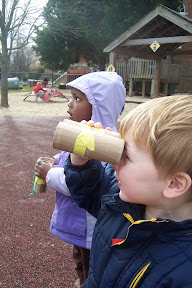 Birds are wild animals that children are quite likely to see and recognize. They live in the city and in the country and in between, all over the world. Why not begin talking about the birds that your students see near school, and have them name all the colors they see? To attract birds for closer observation teachers sometimes put up a feeder where it can be seen from a window for easy viewing and counting. Read about making observations and collecting data in the March 2011 Early Years column in Science and Children.
Birds are wild animals that children are quite likely to see and recognize. They live in the city and in the country and in between, all over the world. Why not begin talking about the birds that your students see near school, and have them name all the colors they see? To attract birds for closer observation teachers sometimes put up a feeder where it can be seen from a window for easy viewing and counting. Read about making observations and collecting data in the March 2011 Early Years column in Science and Children.
Here are some of my favorite early childhood resources for learning about birds and bird behavior.
Articles with ideas for classroom activities
Search Science and Children for “bird” to find almost 20 articles on science learning about birds (NSTA membership required).
 STEM Comes to Preschool by Sally Moomaw and Jaumall A. Davis. Young Children. September 2010 Vol 65 (5): 12-18. The article relates how they used toy Audubon birds (plush replicas of real birds which have a micochip inside that plays a recorded authentic song of the species) in an inclusive preschool classroom to teach patterning.
STEM Comes to Preschool by Sally Moomaw and Jaumall A. Davis. Young Children. September 2010 Vol 65 (5): 12-18. The article relates how they used toy Audubon birds (plush replicas of real birds which have a micochip inside that plays a recorded authentic song of the species) in an inclusive preschool classroom to teach patterning.
Field guides or identification books. No single book fits all needs. Every “birder” has their favorite, but take a look at these two to begin with.
Birds, A Golden Guide by Ira N. Gabrielson, Herbert S. Zim, Chandler S. Robbins (Ed.), illustrated by James Gordon Irving. 2001. St. New York, NY: Martin’s Press. An inexpensive guide for beginning birdwatchers.
Kaufman Field Guide to Birds of North America. Kenn Kaufman. 2005. New York, NY: Houghton Mifflin. A field guide with digitally enhanced photographs and pointers (leader lines) to field marks (distinguishing markings or aspects to note that aid identification), this book is fun for children to use for identification purposes, to browse through, or to read about a particular species.
Trade books
A Place for Birds by Melissa Stewart, illustrated by Higgins Bond. 2009. Atlanta, GA: Peachtree. This book introduces 24 species, includes details in sidebars and describes solutions for problems people create for birds.
Backyard Birds of Winter by Carol Lerner. 1994. New York, NY: HarperCollins. This book targets birds of colder climates and includes feeder information.
Counting Is for the Birds by Frank Mazzola Jr. 1997. Watertown, MA: Charlesbridge. Birds flock to the feeder by one then two and so on, up to 20 (you will have to add the count of zero). Have your students count each species and look for non-birds, a squirrel and cat.
Feathers for Lunch by Lois Elhert. 1996. San Diego, CA: Harcourt. Twelve birds (illustrated with accuracy in Elhert’s appealing cut paper collage style) escape the cat’s pounce. Have your children match birds in this book to birds in a non-fiction bird identification book, and predict the ending of the book. Depicts the real danger to songbirds of allowing pet cats outside.
Fly High, Fly Low by Don Freeman. 2004. New York, NY: Penguin. Now in a 50th anniversary edition, this classic story follows a pair of nesting pigeons (Rock doves Sid and Midge) in San Francisco. Pair this book with the Project PigeonWatch poster (free download).
How the Robin Got Its Red Breast: A Legend of the Sechelt People by Donna Joe, Sechelt Nation, illustrated by Charlie Craigan. 1993. Roberts Creek, BC: Nightwood Editions. Compelling black-and-white illustrations relate the Sechelt legend of how the robin got its colors. Traditional tales often teach about the natural world while serving as guides for proper conduct.
Internet
BirdWatching online magazine (formerly Birder’s World), see the bird photo of the week.
Cornell Lab of Ornithology. Download a free poster, listen to bird calls and songs, read the All About Birds page “Birding 1-2-3: How to Identify Birds” and see the “PigeonWatch” section for information about these common birds. Read about the Feeder Watch Project to learn how to count birds at your feeder and submit a tally sheet to participate in this citizen science endeavor.
Exploring Nature. Look for your local birds on this natural history website with a free database describing many North American birds.
Monterey Bay Aquarium’s Sandy Shore & Aviary Web Cam. Look for oystercatchers, curlews and other birds using the webcam in this California aviary, or play bird bingo.
 Do you, or does your class, have a favorite book about birds?
Do you, or does your class, have a favorite book about birds?
Peggy
20th century skills for the 22nd century and beyond!
By Martin Horejsi
Posted on 2011-03-01
“To know the road ahead, ask those coming back.”
—Chinese Proverb
A team of science educators has developed a new NSTA position statement acknowledging the value of 21st-century skills within the context of science education (available here). The statement advocates for the science education community to support 21st-century skills consistent with best practices across a science education system and notes that “exemplary science education can offer a rich context for developing many 21st-century skills, such as critical thinking, problem solving, and information literacy.” 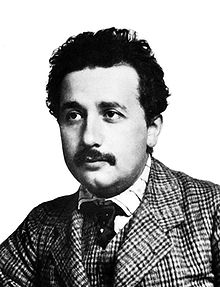
With the first decade of the 21st century already in the rear view mirror, it is somewhat interesting-for several reasons-to still be considering what we call 21st century skills. Like it or not, the 21st century is already 11% over, and yet 21st century skills discussions are couched as if 1) there is a really a choice, and 2) the 21st century is still to come.
Let’s take a stroll down memory lane to consider the challenges to traditional education when calendar pages all over the globe flipped from 1899 to 1900, or in this case, to 1911.
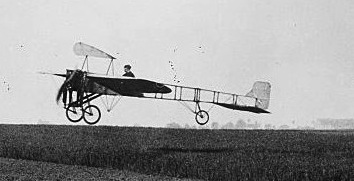
Some of the notable events of the first 11 percent of the 20th century include:
- The first Nobel Prizes are awarded
- The first Trans-Atlantic Radio Signal
- Einstein proposes his theory of Relativity
- The first electric washing machine
- Ford begins selling the Model T
- Plastic is invented
- Peary is first to reach North Pole
- The air conditioner is invented
- Blériot flew his monoplane across the English Channel
- Rutherford discovers structure of the atom
- Raymonde de Laroche was the first woman to receive a pilot’s license
- Amundsen reaches the South Pole
- The first talking motion picture is demonstrated
Digested, this list indicates we drive cars, human flight is obvious, instant global communication is possible, we have a serious challenge to Newton, the guts of an atom are known, and we have stood on the extreme reaches of our planet. In essence, kids, everything from here on out will be much different than anything known before. Ever.
Two years before the first moon landing, Marshall McLuhan penned the following: “Today’s child is bewildered when he enters the 19th century environment that still characterizes the educational establishment, where information is scarce but ordered and structured by fragmented, classified patterns, subjects and schedules.”
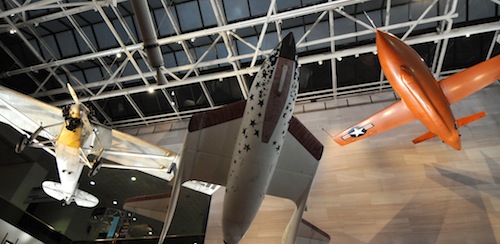
Now lets jump ahead a few decades to see how the 20th century skills played out. But what were the skills of the last century? I’m not sure, however the students of that era either dealt with, discovered, or invented some big ticket things like world wars, the great depression, electrification, antibiotics, the atomic bomb, x-rays, television, telephones, jet flight, radar, vaccines, computers, the moon landing, the internet, and cell phones, just to name a few of the thousands of new additions to society. Not an insignificant list compared with our list that includes iPods, Facebook, eBay, YouTube, video chat and digital books. Sure, I know there are greater things to point a finger at for examples of 21st century change, but as governments fall and rise, the revolutions of Facebook, Twitter, YouTube, and soon (my guess) Google Earth should hardly be surprising. If you recall, Thomas Jefferson did once say, “Information is the currency of democracy.” And if there is anything the above list of web-based tech shouts out, its information.
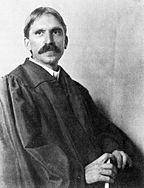
So were people in 1911 concerned that the education system was failing to teach the skills necessary to be a productive citizen in the new century? I don’t know. I wasn’t there. But there are plenty quotes from education experts of the time expounding upon the perils and pitfalls of our current public school trajectory. For example, in the first half of the last century John Dewey wrote, “Education is a social process. Education is growth. Education is, not a preparation for life; education is life itself.” Wow, John, that sure sounds a lot like our 21st century skillset.
However, what I do believe is different in the 21st century is the acknowledgement that we can only use today cautiously to predict tomorrow. Further, the skills expected of high school graduates are not limited to those of content, but also must include a flexible, fluid, dynamic attitude that integrates well with any situation the student may encounter. Oh, and the student will encounter situations unlike any generations previous.
What the 21st century has taught us thus far, very much like the first decade of the 20th century, is that inventions and institutions are not much more than suggestions. And to think otherwise is to place too much faith in stasis. As NSTA solicits input about 21st century skills, something should feel familiar about the topic. In the draft position statement, the following list is provided including: core subject knowledge; learning and innovation skills; information, media, and technology skills; life and career skills; adaptability; complex communication/social skills; nonroutine problem solving; self- management/self-development; and systems thinking.
Sounds an awful lot like the processes of science to me. And what’s not to like about that?
Actually, there is something. It’s subtle, but we have longed for predictability in education, and now it seems we are attempting to encapsulate unpredictability into a predictable program with defined outcomes.
My worry here is that we might be using the same piece of 20th century educational practice that concerned McLuhanin in order to package and sell the concept of 21st century skills. As Dewey foretold, the future is not a destination where one arrives and the story ends. And similarly, 21st century skills are not a finite set of testable proficiencies. Instead they are goals of direction and objectives of strategy. As we race against the clock to capture and cage the skills of the 21st century, let’s not incarcerate them, for once in captivity they might fail to thrive. The skills will need to roam in the wild if they are truly going to make a difference.
“Only when we know a little do we know anything; doubt grows with knowledge.”
—Johann Wolfgang von Goethe
“To know the road ahead, ask those coming back.”
—Chinese Proverb



